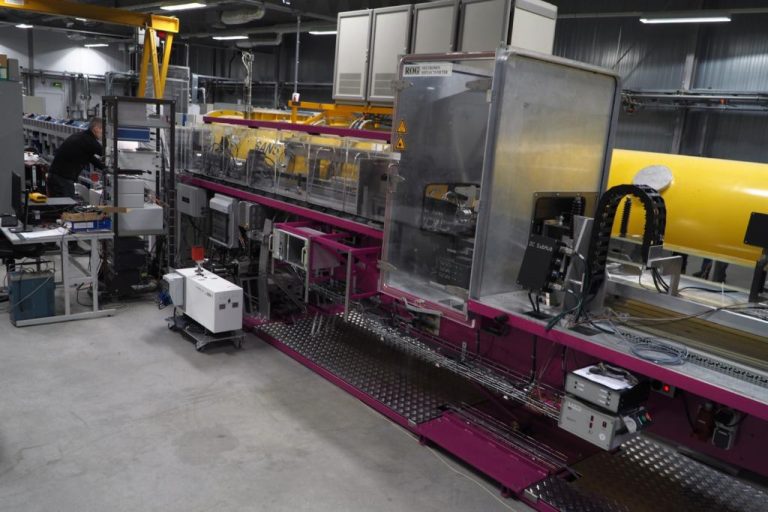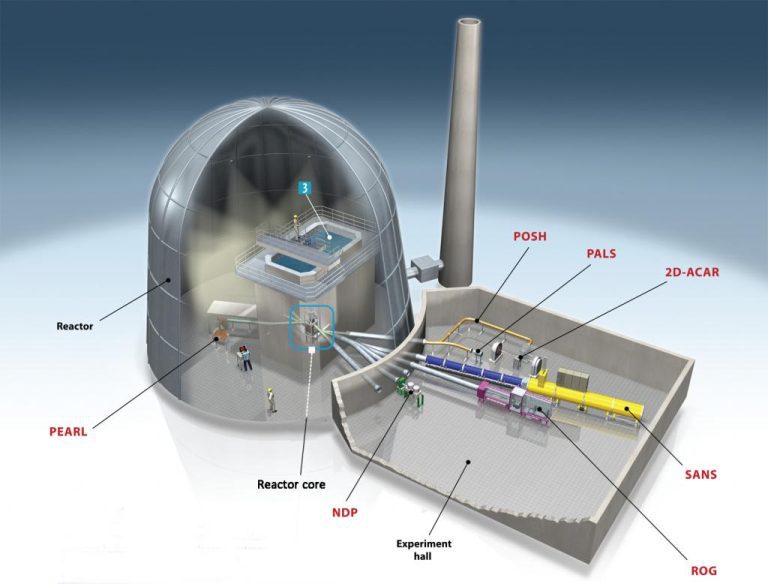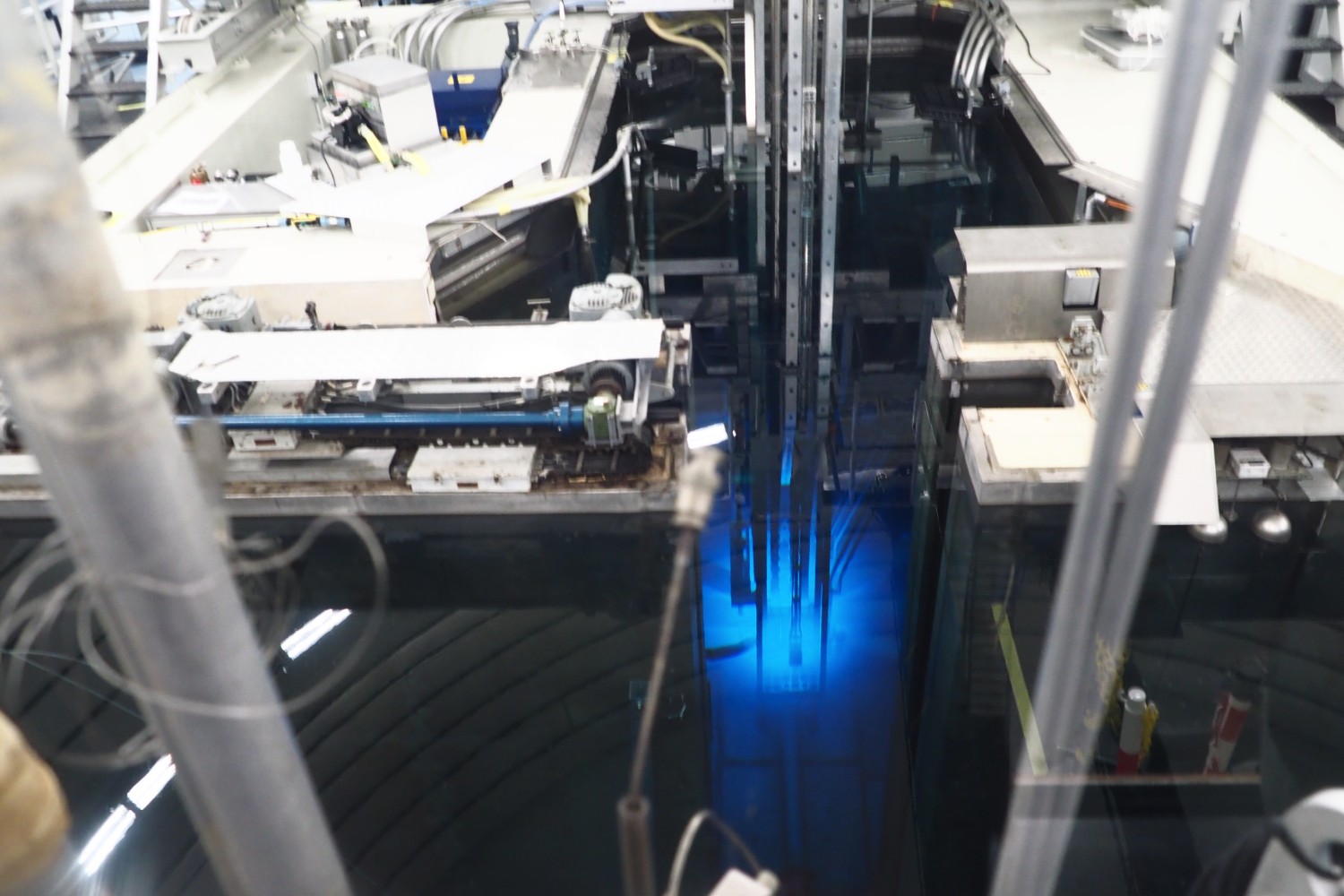The RID’s nuclear reactor has recently started to shine blue again. Everything is awaiting the installation of the cold neutron source. But this has repeatedly been rejected.
The Higher Education Reactor (HOR) was put back into operation at the end of 2021, pending the final upgrade. (Photo: Jos Wassink)
The reactor has been thoroughly refurbished. The cladding on the outside of the reactor building was replaced, and a shiny building was put up against it where liquid helium is produced to cool the cold neutron source. Inside, control and monitoring equipment has been brought up to the latest standard. Since the accident in Fukushima (2011), the standards for nuclear installations have been raised considerably, says Reactor Institute Delft (RID) Director Prof. Bert Wolterbeek.


(Photo: Jos Wassink)
And so the reactor was restarted in early December 2021. The reactor is fully operational and in the adjacent experiment hall, technicians are putting the finishing touches to the measuring instruments that are fed by neutron beams from the reactor core. Only one thing is missing and that is the cold neutron source – the high-tech extension that has been in the works for more than a decade. The modernisation of the Higher Education Reactor under the name OYSTER (Optimised Yield – for Science, Technology and Education of – Radiation) was supported by the Ministry of Education, Culture and Science with a contribution of EUR 38 million. TU Delft’s in-kind contribution was about double that amount.
The cold neutron source plays a key role in OYSTER. Cooled neutrons interact more with the sample, which is expected to improve the quality and speed of the measurements by up to 100 times.
This is especially true for two important instruments. One is the neutron reflectometer called ROG that scans the surface of materials for layer thickness and composition. Applications include the development of hydrogen sensors and thin film lithium batteries. Another instrument, SANS, deduces the structure of test materials at nanometre scale by scattering neutrons at a small angle. These techniques have applications in chemistry, physics and biology.
Slow neutrons


“Neutrons move through matter like people move through a group,” compares Dr Jeroen Plomp, Head of the Instrument Group at RID. “If you go to a rave, you start jumping too, but if you are in a funeral procession, you quietly shuffle along.” A neutron that shoots out of the reactor core takes on the energy of the 40-degree hot water that surrounds it. But after neutrons move a few centimetres through liquid hydrogen (temperature approximately -250 degrees Celsius), they collide and start to slow down. They then become a lot slower, staying in the sample longer and giving more accurate results.
The specifications of the RID were not met
The heart of the cold neutron source is no bigger than a football and contains several litres of liquid hydrogen. The hydrogen is cooled down with liquid helium (-269 degrees Celsius) from the shiny building next door. The source will be placed between the reactor core and one of the outgoing pipes leading to the measuring instruments. In February 2017, TU Delft signed a contract with KHC, the South Korean consortium, to build the cold neutron source.
Tricky welding
It is a complicated job, Wolterbeek explains. The construction has three thin-walled aluminium layers with liquid hydrogen, high vacuum and shielding gases between them. While testing a simpler pilot model in 2019, a small gas leak was detected in a weld seam between the liquid hydrogen and the high vacuum. Problems with welding under these high specifications, leak-tightness requirements and awkward geometry continue to haunt the fabricators.
“If you have welded one layer properly, which is already difficult, and you start on the second layer, this can also have an effect on the first weld, and it can become defective,” says Wolterbeek. And that is what KHC and the Lloyds inspectors have found time and again. The specifications of the RID were not met. On top of that, the travel restrictions due to corona that the inspectors encountered have caused additional delays. The RID Director says that a fourth specimen is now under construction that will have to meet the high standards.
According to the latest reports, it should be delivered in June 2022. If the cold source passes the acceptance tests, it will be installed in the reactor basin (see drawings below). For this, the reactor will be shut down until the end of November. The most favourable prognosis for the completion of the multi-million OYSTER project is therefore December 2022.




The location of the cold source (4) between the core and a neutron pipe. (Drawing: Eric Verdult | Kennis in Beeld)
Do you have a question or comment about this article?
j.w.wassink@tudelft.nl


Comments are closed.